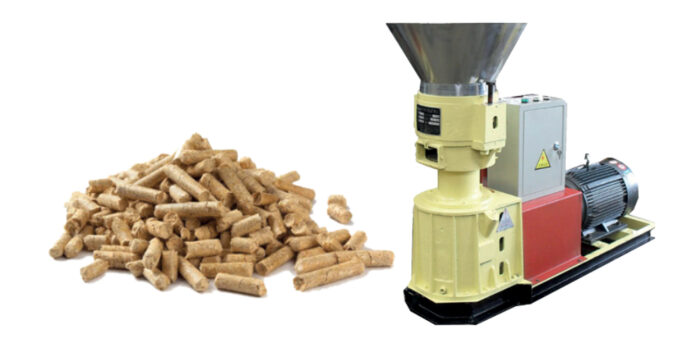Pelletizing or pellet machines are the ones that convert various raw materials onto pellets. These pellets are used in multiple applications, from combustion to animal feeding.
The pelletizing process and pellet machine features vary based on the raw materials. The pelleting process of every raw material doesn’t differ much but still needs to be considered by the user.
Here is a complete list of raw materials you can use to make pellets with their significant applications and reason to use.
1. Wood
Wood is the most demanding material in pellet formation as wood pellets are used in the combustion process on both industrial and residential levels. Usually, the waste wood is used in making pellets.
The waste wood includes wood branches, construction leftovers, wood chips and blocks, tree trunks, etc.
Advantages
- Help in wood waste recycling
- Less harmful than coal and other combustion materials
- Provide a cost-effective burning solution
2. Sawdust
Sawdust is a powdery waste formed as a result of wood sawing. This material is not helpful in powder form, but its pellets provide an adequate burning fuel. The sawdust pellets also have the same advantages as the wood pellets.
3. Straw
The non-useable parts of mature crops like leaves and stems are called straws. After the crop harvesting, straw is available in a huge mass. The straw is rich in micronutrients, making it an excellent renewable energy source.
The straw pellets are used worldwide for multiple applications like a fuel source, feeding, or animal bedding.
4. Grass
The grass is used to form biomass pellets that are popular for their less harmful or low ash-producing quality. The primary benefit of using grass in pellet formation is that the grass is always readily available and easy to grow.
The grass pellets are used for animal feeding and sustainable fuel formation.
5. Activated Carbon
Activated carbon pellets are formed from advanced technology used in large-scale applications like wastewater plants. The activated carbon pellets are formed from the nutshells, coal, and coconut shells.
Advantages
Other than using in many vital applications; activated carbon pellets are beneficial in many ways;
- They can be used up to 4-5 times
- High strength, ignition, absorption, and low ash formation
- Used to remove harmful chemicals and gases from different materials
6. Palm
Palm is an emerging source of pellet formation. The palm tree pellets are called EFB (empty palm fruit) pellets. To meet the global fuel demand, various raw materials are used in pellet formation, and the palm tree is one of them.
These pellets are formed from the empty and useless branches of the palm trees.
Advantages
- Renewable and sustainable
- Help to deal with massive palm waste
- Provide high combustion energy
7. Bagasse
Bagasse is the fibrous waste of sugarcane after removing all the juice. This material is hardly used in any other application, but its massive amount becomes a total waste. Bagasse is now used in pellet formation to deal with this waste in a healthy and eco-friendly way.
Bagasse pellets are used in burning processes at both commercial and minor scales in a budget-friendly manner.
Conclusion
China’s yulong pellet machine collection is proving an excellent solution for all the above-mentioned raw materials pellet formation. If you want to deal with one of these raw materials, check the Yulong website for the complete process and appropriate pellet machine.










